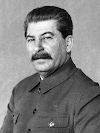
Introduction
Adolf Hitler, the dictator of Nazi Germany, was one of history’s most infamous figures. Responsible for World War II and the Holocaust, his actions led to the deaths of millions. This article covers his early life, rise to power, military conquests, major defeats, and ultimate downfall.
Early Life & Background
Ø Born: April 20, 1889, in Braunau am Inn,
Austria-Hungary.
Ø Family: His father, Alois Hitler, was a
strict customs official; his mother, Klara Hitler, was caring but
died young.
Ø Struggles in Youth: Failed to get into art school
twice (1907–1908), lived as a struggling artist in Vienna.
Ø World War I Service: Joined the German army (1914), fought bravely, was wounded twice, and was deeply upset by Germany’s surrender in 1918.
Rise to Power (1919–1933)

1. Joining the Nazi Party

Ø After WWI, Germany was in chaos (economic crisis, humiliation
from Treaty of Versailles).
Ø Hitler joined a small nationalist group, the German
Workers' Party (DAP), later renamed the Nazi Party (NSDAP).
Ø 1923: Beer Hall Putsch – Hitler tried to overthrow
the government but failed and was jailed.
2. Writing "Mein Kampf" (My Struggle)
Ø In prison (1924), he wrote his autobiography and political
manifesto, Mein Kampf, outlining his racist ideology:
v
Anti-Semitism (hatred of
Jews) – Blamed them for Germany’s problems.
v
Lebensraum ("Living
Space") – Wanted to expand Germany eastward.
v
Fascism &
Dictatorship – Believed democracy was weak.

3. Becoming Chancellor (1933)
Ø The Great Depression (1929) made Germans desperate for strong
leadership.
Ø Hitler used propaganda (Joseph Goebbels) and fear (SS,
SA troops) to gain support.
Ø January 30, 1933 – Appointed Chancellor of
Germany.
Ø 1934 – Declared himself "Führer"
(Supreme Leader) after President Hindenburg’s death.
Hitler’s Dictatorship (1933–1939)

1. Brainwashing the Nation

Ø Propaganda: Controlled media, films, and education
to glorify Nazis.
Ø Censorship: Burned books, banned opposing views.
Ø Persecution of Jews:
v
1935: Nuremberg Laws –
Stripped Jews of citizenship.
v
1938: Kristallnacht
("Night of Broken Glass") – Nazis attacked Jewish homes
& synagogues.
2. Military Expansion Before WWII
Ø 1936: Remilitarized the Rhineland (violating Treaty
of Versailles).
Ø 1938: Annexed Austria ("Anschluss") – Met
with cheering crowds.
Ø 1938: Took Sudetenland (Czechoslovakia) – Britain
& France allowed it (Munich Agreement).
Ø 1939: Invaded Czechoslovakia – Showed Hitler
wouldn’t stop.
World War II: Hitler’s
Conquests & Defeats (1939–1945)


1. Early Victories (1939–1941)
Ø September 1, 1939: Invaded Poland – Started WWII.
Ø 1940: Blitzkrieg ("Lightning War")
v
April: Conquered Denmark
& Norway.
v
May: Defeated France in
6 weeks.
v
Battle of Britain
(1940–41): Failed to defeat UK (RAF resisted).

2. Invasion of the Soviet Union (1941–1945)
Ø June 22, 1941: Operation Barbarossa – Hitler broke
the Nazi-Soviet Pact, invaded USSR.
Ø Early Success: Captured vast territories (Ukraine,
Belarus).
Ø Big Mistake: Underestimated Soviet resistance &
harsh winter.
Ø 1943: Lost at Stalingrad – Turning point of WWII.

3. The Holocaust (1941–1945)
Ø "Final Solution" – Systematic genocide of
Jews in concentration camps (Auschwitz, Treblinka).
Ø 6 million Jews murdered, plus millions of others (Roma,
disabled, political enemies).

4. Major Defeats (1943–1945)
Ø 1943: Allies invaded Italy – Mussolini fell from
power.
Ø June 6, 1944: D-Day – Allied forces landed in
Normandy, France.
Ø 1945: Soviet Army advanced into Germany – Reached
Berlin.

Hitler’s Downfall & Death (1945)
Ø April 30, 1945: As Soviet troops closed in on
Berlin, Hitler committed suicide in his bunker with his
wife, Eva Braun.
Ø May 7, 1945: Germany surrendered (V-E Day).
Why Did Hitler Lose?
- Invaded USSR – Stretched German forces
too thin.
- Declared War on U.S. (1941) – Brought
America’s full power against him.
- Brutal Policies – Resistance grew in
occupied nations.
- Allied Unity – Britain, USA, USSR worked
together.
Legacy of Adolf Hitler
Ø World War II Deaths: 70–85 million (civilian
& military).
Ø Holocaust: One of history’s worst crimes.
Ø Germany Divided: After WWII, split into East &
West Germany until 1990.
Ø Lesson: Showed the dangers of dictatorship,
racism, and unchecked power.
Conclusion
Adolf Hitler rose from a failed
artist to a dictator who caused unimaginable destruction. His early
victories fooled many, but his greed, cruelty, and mistakes led
to his downfall. His legacy remains a warning against hatred and
tyranny.







0 Comments